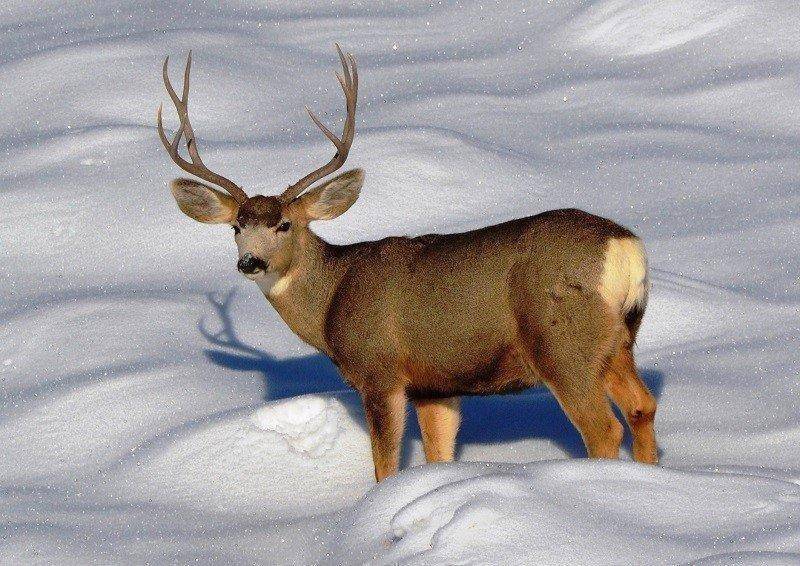DWR Press Release
Winter is the toughest time of the year for Utah’s mule deer
Snow and cold temperatures have blanketed the places mule deer live in Utah. And that’s brought Division of Wildlife Resources biologists out in force.
As they do every winter, biologists are monitoring the state’s deer herds closely. If conditions get too severe, the biologists are prepared to feed the deer specially designed pellets. The pellets supplement the natural diet of the deer when the browse the deer normally eat is limited. Feeding pellets to the deer may improve the survival of some of the animals and help them make it through the winter.
To help the deer, biologists encourage you not to feed deer on your own. In most cases, feeding deer can actually hurt the animals more than it helps them.
“If winter conditions get too severe, though,” says Justin Shannon, big game coordinator for the DWR, “feeding deer these specially designed pellets can be worth the potential risks.”
More information about the challenges feeding poses to deer is available at www.wildlife.utah.gov/dwr/deer-winter-feeding.html.
Monitoring four things
At checkpoints this past fall, DWR biologists measured the amount of fat on deer taken by hunters. The amount of fat deer have in the fall is important; when food is hard to find in the winter, deer rely on their fat reserves to get them through the season.
Shannon says the deer that came through the checkpoints were in really good condition. “They had plenty of fat reserves,” he says.
Keeping in mind the amount of fat the deer had last fall, Shannon says biologists are monitoring four things this winter:
– The amount of food available to the deer
– How deep the snow gets
– How cold the temperature gets
– The amount of body fat they find on deer that have been killed along roads
If at least three of the four factors reach a critical point, biologists will consider feeding deer the specially designed pellets. The pellets are formulated to fit the complex digestive system mule deer have.
Don’t feed deer on your own
Shannon strongly advises you not to feed deer on your own. If feeding isn’t done the right way, the following can happen:
– Deer have complex and delicate digestive systems. If you feed a deer the wrong food, the deer can actually starve to death, even though its stomach is full of food.
– Feeding deer congregates the deer in a smaller area. And that can lead to all kinds of problems for the deer:
* Bringing a large number of deer into a small area increases the chance the deer will pass diseases to each other.
* When deer congregate to feed, it’s “every deer for itself.” The larger deer push the smaller deer—the fawns—aside. Fawns often end up receiving less food than they would have received if you had left the deer alone and not fed them.
* If feeding occurs near a road, the chance deer will be hit and killed by cars increases.
* In addition to eating what you’re feeding them, deer will also eat other vegetation in and near the feeding area. This can lead to deer over-browsing the area. That over-browsing can damage the plants in the area for years to come.
* Even after winter is over, deer will often stay close to the area where you fed them instead of leaving the area and moving to areas they normally use during the rest of the year. This can negatively influence the deers’ migration patterns and harm the deer.
Living with deer
If deer are visiting your backyard, tips for living with the animals are available at www.wildawareutah.org/utah-wildlife-information/mule-deer.

